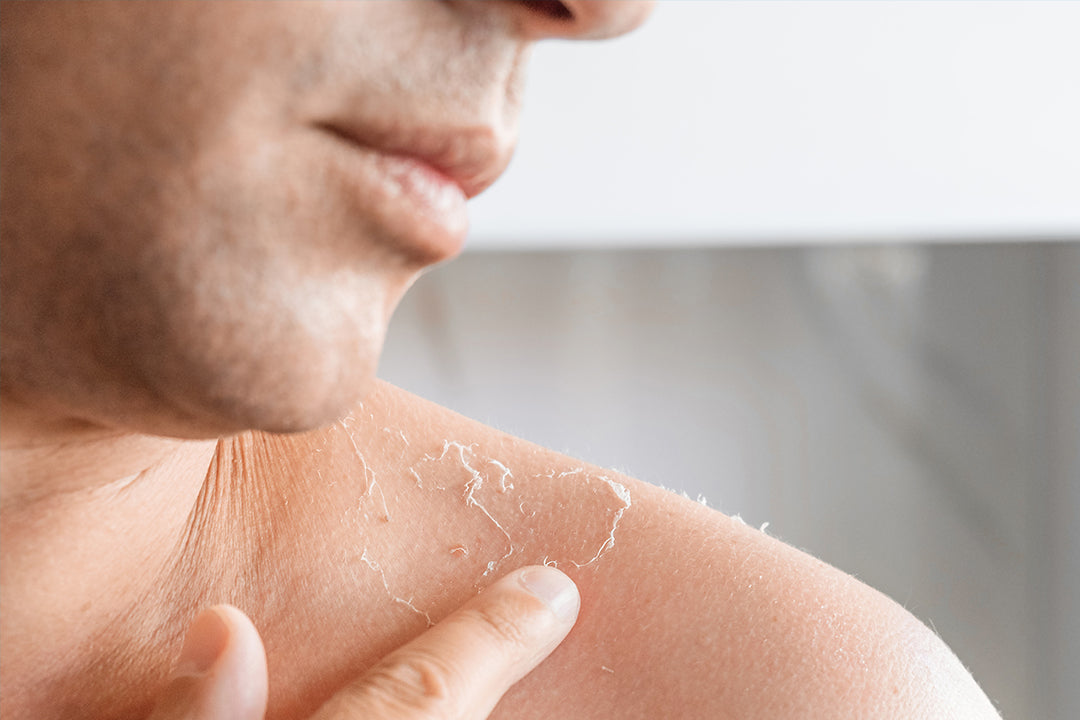Have you ever wondered how often your skin sheds? Understanding the skin cycle and the process of dead skin removal is essential for maintaining healthy and radiant skin. In this article, we will explore the fascinating world of the skin cycle, different methods to remove dead skin from your face, and the importance of knowing your skin type. So, let's dive in!
What is a Skin Cycle?
The skin cycle, also known as the skin renewal process, is the natural process by which your skin sheds dead cells and replaces them with new ones. It is a continuous and dynamic process that occurs throughout your entire life. Your skin is constantly renewing itself, and understanding this cycle can help you take better care of your skin.
How Often Does Your Skin Shed?
The skin shedding cycle varies from person to person, but on average, your skin sheds every 30 days. This means that every month, your skin undergoes a complete turnover, replacing old and damaged cells with new ones. However, several factors can affect the skin shedding cycle, including age, genetics, and environmental factors.
Why is Dead Skin Removal Important?
Dead skin removal is crucial for maintaining healthy and glowing skin. When dead skin cells accumulate on the surface of your skin, they can clog your pores, leading to acne breakouts, dullness, and uneven texture. By regularly removing dead skin, you can improve the effectiveness of your skincare products, enhance skin cell turnover, and achieve a smoother and more radiant complexion.
Methods to Remove Dead Skin from Your Face
There are several effective methods to remove dead skin from your face. Let's explore some of the best and worst ways to do it:
- Chemical Exfoliation: Chemical exfoliation involves using products that contain gentle acids, such as alpha hydroxy acids (AHAs) and beta hydroxy acids (BHAs), to dissolve dead skin cells. These exfoliants work by loosening the bonds between dead skin cells, making it easier to remove them.
- Mechanical Exfoliation: Mechanical exfoliation refers to physically scrubbing away dead skin cells using exfoliating tools, such as brushes, sponges, or scrubs. While this method can be effective, it is essential to be gentle and avoid excessive scrubbing, as it can cause irritation and damage to your skin.
- Enzymes: Enzyme exfoliants are derived from natural sources, such as fruits and plants. These enzymes work by breaking down the proteins that hold dead skin cells together, allowing them to be easily removed. Enzyme exfoliation is a gentle and effective method suitable for sensitive skin.
- Powders: Powder exfoliants are dry formulations that activate when mixed with water. These powders contain ingredients, such as rice bran or oatmeal, which provide a mild exfoliating action. They are a great option for those with sensitive or acne-prone skin.
- Dry Brushing: Dry brushing involves using a brush with stiff bristles to gently exfoliate your skin. This method not only removes dead skin cells but also improves blood circulation and lymphatic drainage. However, it is crucial to use a soft-bristle brush and avoid applying too much pressure to prevent skin irritation.
- Washcloth: A simple washcloth can also be an effective tool for removing dead skin cells. Wet the washcloth with warm water and gently rub it in circular motions on your face. This method provides a gentle exfoliation and is suitable for all skin types.
What Not to Use
While exfoliation is essential for healthy skin, it is equally important to know what not to use. Avoid harsh scrubs with large particles, as they can cause micro-tears in your skin. Additionally, be cautious when using chemical exfoliants and follow the instructions carefully to prevent over-exfoliation and skin irritation.
How to Get Started with Dead Skin Removal
First, understanding your skin type is crucial for choosing the most effective products and methods to remove dead skin. Here are the different skin types and their characteristics:
- Normal Skin: Balanced skin with few imperfections
- Dry Skin: Lack of moisture, often feels tight or flaky
- Oily Skin: Excess sebum production, shiny appearance, prone to acne
- Combination Skin: Combination of oily and dry areas
- Sensitive Skin: Easily irritated, reacts to certain products or ingredients
Important Safety Tips
When it comes to dead skin removal, safety should be a priority. Here are some essential safety tips to keep in mind:
- Always perform a patch test before using any new exfoliating product
- Follow the instructions provided by the product manufacturer
- Avoid over-exfoliating, as it can lead to skin irritation and sensitivity
- Moisturize your skin after exfoliation to maintain hydration
- Protect your skin from sun exposure by wearing sunscreen
The Bottom Line
Understanding the skin cycle and the importance of dead skin removal is vital for achieving healthy and radiant skin. By incorporating exfoliation into your skincare routine and choosing the right products for your skin type, you can promote cell turnover and reveal a smoother and more youthful complexion. Remember to be gentle, listen to your skin's needs, and enjoy the journey towards healthy and glowing skin!









